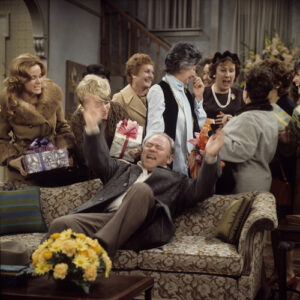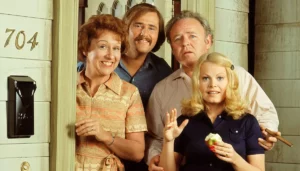In the landscape of American television before the debut of “All in the Family” in January 1971, there existed a stark disconnect between the realities of everyday life and the sanitized portrayals on screen. Norman Lear, the show’s creator, poignantly captured this disparity in his autobiography, “Even This I Get to Experience.” According to Lear, prior to “All in the Family,” television comedy painted an idyllic picture of America, ignoring pressing social issues like hunger, racial discrimination, unemployment, and the Vietnam War. The prevailing sitcoms of the time offered a comforting escape, depicting a nation blissfully unaware of its societal challenges.

As Lear and his co-producer Bud Yorkin approached CBS with their groundbreaking concept, they found a network eager for change, yet perhaps unprepared for the boldness of their vision. Just days before the show’s premiere, Variety’s Les Brown noted that CBS had successfully captured the “rural middle-American viewership” with its lighthearted comedies but struggled to incorporate stories with a social conscience. The network aimed to “de-ruralize” its programming to better reflect the changing social landscape of America.
When “All in the Family” aired in a time slot immediately following established sitcoms like “The Beverly Hillbillies” and “Hee Haw,” it confronted viewers with the stark realities of a nation in turmoil. The late 1960s and early 1970s were marked by significant unrest: the assassinations of Martin Luther King Jr. and Robert Kennedy, widespread protests against the Vietnam War, and the tragic Kent State shootings, where National Guardsmen killed four students during a protest. These events shaped a generation, yet they were largely absent from the television narratives that dominated the era.
The 1969-70 television season featured a lineup that emphasized escapism rather than engagement with pressing social issues. Shows like “Gunsmoke,” “Bonanza,” and “Mayberry RFD” were popular, but they failed to resonate with the realities faced by many Americans. While “Laugh-In” offered some topical humor, it was an outlier in a sea of programs that perpetuated old-fashioned values and storylines.

Despite the changing tides of public sentiment, network executives remained cautious about introducing content that might alienate advertisers or viewers. The backlash against any hint of controversy was evident in various incidents, such as the outcry over Petula Clark touching Harry Belafonte during a duet on her special, which led to pressure to censor the moment. Moreover, the cancellation of “The Smothers Brothers Comedy Hour,” a show that pushed boundaries with its political satire and musical guests, illustrated the reluctance of networks to embrace shows that challenged the status quo.
Even as “All in the Family” was being developed, CBS executives were wary. In July 1970, after the network had committed to airing thirteen episodes, CBS’s Robert Wood expressed the need for television to “get in step with contemporary life.” His support for the show came despite skepticism from some within the network who feared it would create controversy.
The innovation of “All in the Family” extended beyond its themes; it also transformed the visual language of sitcoms. The Bunker family’s living room set included a television, a detail that reflected the reality of American families who centered their lives around this new form of entertainment. Additionally, the show featured the sound of a toilet flushing—an audacious choice that symbolized its commitment to realism and authenticity.
Through its complex characters, “All in the Family” addressed issues of race, gender, and class with a candor that was unprecedented in television history. The character of Archie Bunker, portrayed by Carroll O’Connor, became a cultural touchstone, embodying the prejudices and fears of many Americans while also serving as a foil for the progressive values represented by his son-in-law, Mike Stivic. This dynamic allowed the show to explore contentious social issues in a way that was both humorous and thought-provoking.

The impact of “All in the Family” was profound, paving the way for future television programs to tackle serious subjects with nuance and empathy. Shows that followed would continue to push boundaries, reflecting the complexities of modern life and the diversity of the American experience. By breaking away from the formulaic sitcoms of the past, Lear and his team opened the door for a new era of television that could challenge viewers to confront uncomfortable truths while still entertaining them.
In conclusion, “All in the Family” was not just a sitcom; it was a cultural milestone that changed the landscape of television forever. By daring to depict the realities of American life—complete with its struggles and contradictions—the show invited audiences to engage with the world around them, fostering a deeper understanding of the societal issues that persisted, and encouraging the next generation of storytellers to continue exploring the complexities of human experience.